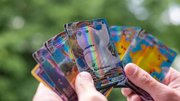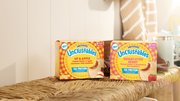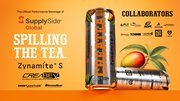Blog
Want To Win the Mobile Payment Race? Be Like Starbucks
February 2, 2015 | Mike Gron
TAGS: Starbucks payment app, mobile payments, vending machine technology, Mike Gron, PayLabs Network, vending management systems, customer loyalty programs, cashless vending, retail trends, moible wallets |
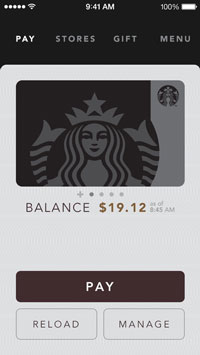 There's little doubt that your wallet is going mobile and everyone from Apple to Amazon, Google and Square wants a piece of it. That's not surprising considering the mobile payment market is expected to top $720 billion by 2017, up from $235 million in 2013. That's obviously big news for the future of retail, but to see what the current state of mobile payments looks like, pick up your phone and head to your local Starbucks.
There's little doubt that your wallet is going mobile and everyone from Apple to Amazon, Google and Square wants a piece of it. That's not surprising considering the mobile payment market is expected to top $720 billion by 2017, up from $235 million in 2013. That's obviously big news for the future of retail, but to see what the current state of mobile payments looks like, pick up your phone and head to your local Starbucks.
Starbucks has been a leader in mobile payments since it launched its initial pilot project in 2009 and if you've visited a Starbucks lately, chances are you've already seen the solution in action. Actually, it's been hard to miss considering the coffee giant is currently processing more than 5 million mobile transactions a week, twice that of a year ago. Ten million North American consumers have already downloaded Starbucks' mobile app, accounting for 15% of Starbucks current revenue and growing fast. Perhaps most telling is the fact that Starbucks' mobile app represented 70% of all mobile wallet apps downloaded in 2013.
So why has Starbucks' app been so successful while other mobile wallets, including Google Wallet and Softcard (formerly Isis), have struggled to gain traction? Certainly Starbucks' has benefited from a rising tide of mobile penetration among consumers. Smartphones are the most rapidly adopted consumer technology in human history; twice as fast as the Internet and 10 times faster than the adoption of home computers. But that factor is not unique to Starbucks -- it's just been able to leverage the new mobile consumer more effectively than virtually any other retailer.
Why Is Starbucks Effective?
One reason is the Starbucks app's relative simplicity. It's a natural progression of the company's popular loyalty card, incorporating the same barcode scanners at the counter with which it's been using to process gift cards for years. The app functions as a mobile loyalty or gift card, which means it has no technical dependencies, like NFC, Bluetooth or Wi-Fi. Instead, their app can be downloaded and used immediately on virtually any smartphone.
Another reason is the app can be easily downloaded by the consumer and linked to a credit or debit card, Pay Pal or Square account, among others, and its balance can be topped off quickly. Based on the number of active users, consumers appear more than willing to carry modest balances on their phones in return for the convenience of not searching for cash or pulling out a card at the point of sale.
But Starbucks' mobile payment strategy isn't simply about enabling payments by phone -- it's much more than that. Starbucks chief executive Howard Schultz stated on a recent quarterly earnings call, "Together, our best-in-class card, loyalty and mobile assets enabled us to deepen our connection to our customers and create further separation from competitors."
For Starbucks, mobile and loyalty represent an effective way to engage the consumer; exchange rewards, offers and discounts; and obtain a deeper understanding of customer preferences, habits and behaviors.
On a 2012 conference call Schultz said, "the rapid adoption of mobile gives us an opportunity to create a unique and much deeper relationship with our customers. We have the unprecedented ability to reach new consumers, create awareness to new products, drive incremental transactions and explore new revenue streams."
Based on the Starbucks case, it could be argued that a successful mobile payment solution is less about payments than it is about user experiences. In other words, simply replacing a plastic card with a phone isn't particularly innovative or compelling. Mobile needs to be part of a more meaningful offering in order draw in users and keep them engaged for the long term. For Starbucks customers that means the gamification of their morning coffee. Every purchase made with the app earns loyalty rewards that can be redeemed with as few as five purchases. Likewise, the app gives Starbucks a direct conduit to each of their 10 million users who receive everything from iTunes credits to product updates.
In the vending machine channel, those added capabilities may include loyalty and reward programs, audience analytics, social networking or personalization. In addition, we will likely see greater integration between payment solutions and the technologies the industry has worked hard to integrate over the last decade, including remote machine monitoring, dynamic routing, warehouse automation and cloud-based management solutions. When Starbucks' chief executive recently said "the global adoption of smartphones and mobile technologies in general will continue to transform and evolve the retail landscape in areas of payment, loyalty and consumer experiences in years to come and in ways that just a year ago we probably could not conceive of," he could have just as easily been speaking about vending.
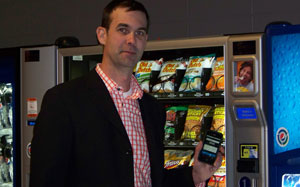 Mike Gron is president and founder of PayLab Networks, a mobile payments provider based in Calgary. Since 2007, Gron has been involved in several technical aspects of the vending industry, including remote machine monitoring, cloud computing and mobile payments. PayLab Networks is said to leverage internal hardware and location services on a user's smartphone, and couples it with data captured via cameras and sensors embedded in POS hardware to create a frictionless, secure and compelling vend transaction. He can be reached at mike@paylabnetworks.com.
Mike Gron is president and founder of PayLab Networks, a mobile payments provider based in Calgary. Since 2007, Gron has been involved in several technical aspects of the vending industry, including remote machine monitoring, cloud computing and mobile payments. PayLab Networks is said to leverage internal hardware and location services on a user's smartphone, and couples it with data captured via cameras and sensors embedded in POS hardware to create a frictionless, secure and compelling vend transaction. He can be reached at mike@paylabnetworks.com.